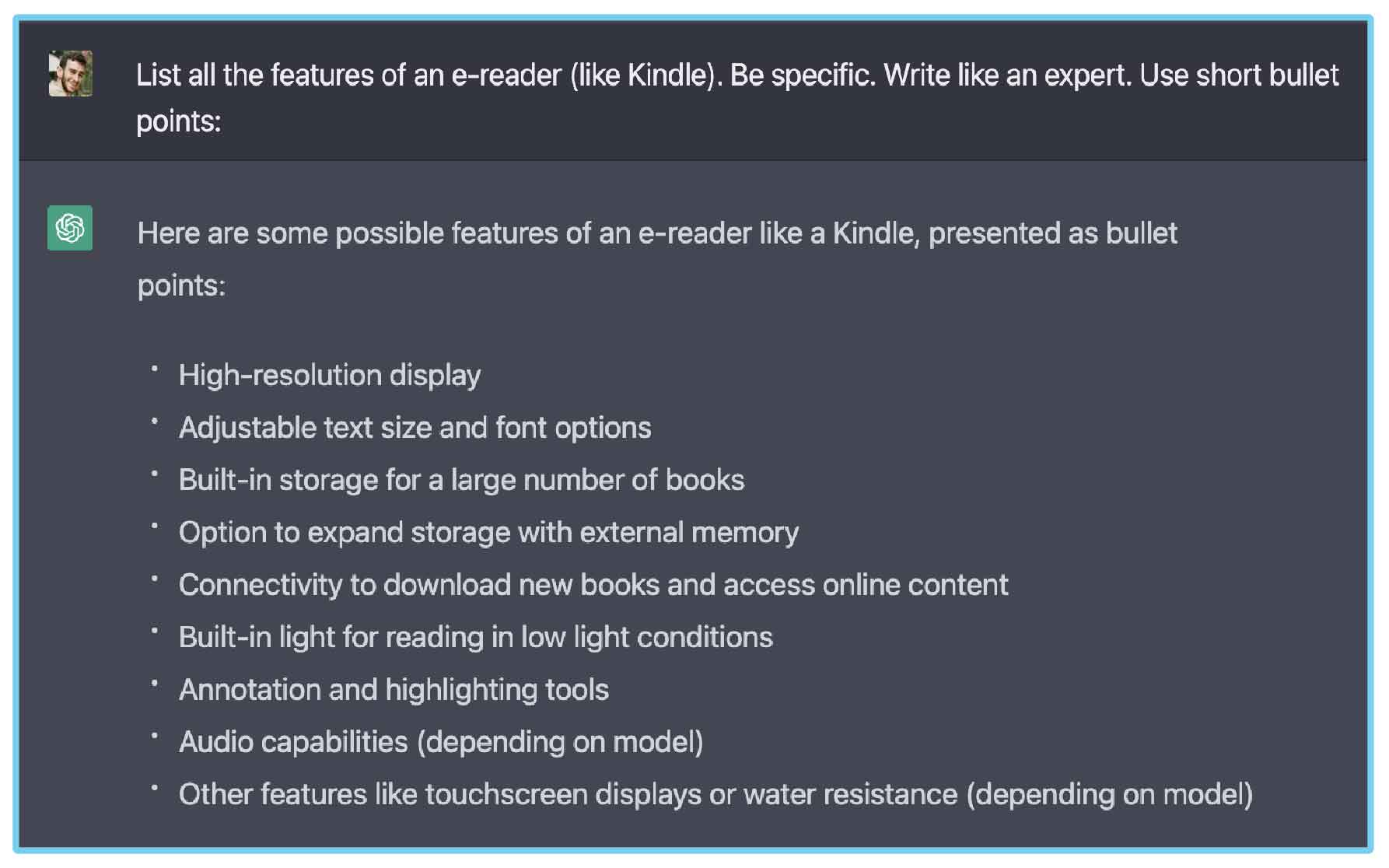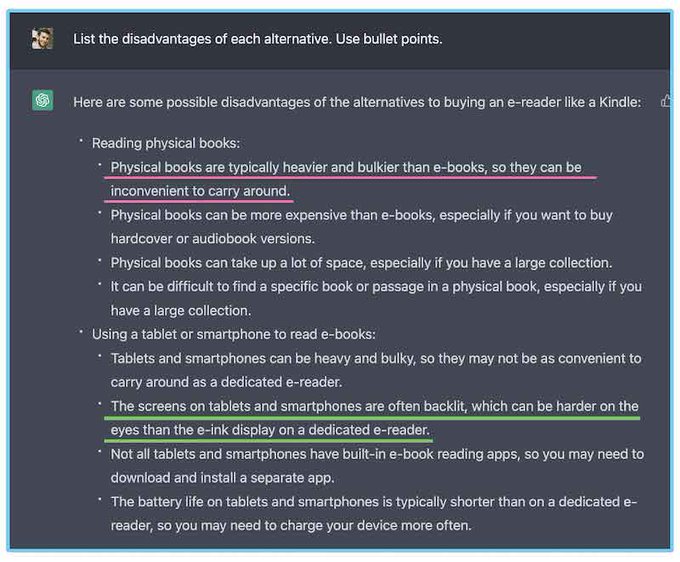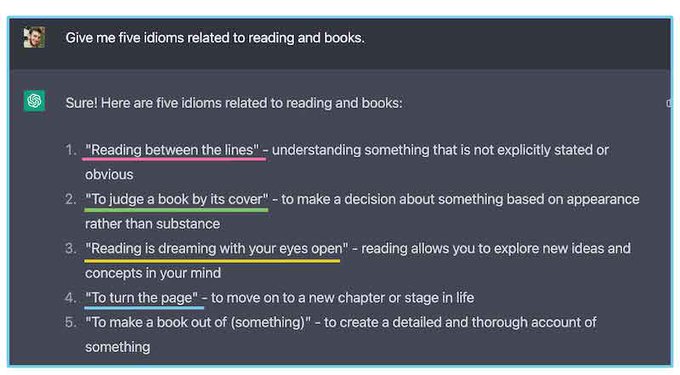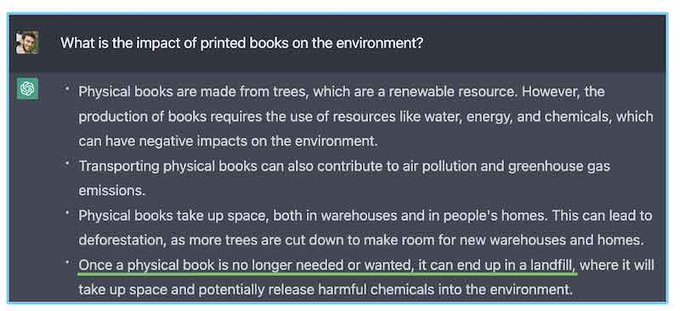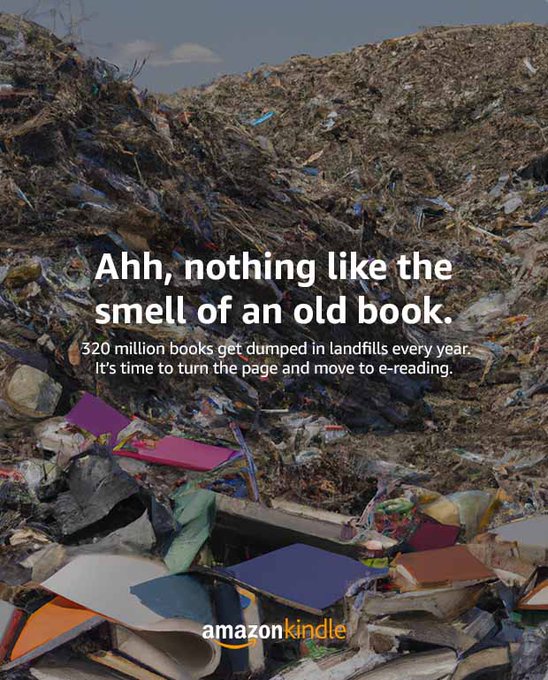If your social feed is suffering from a severe case of ChatGPT mania, you’re not the only one. Lots of content and copywriters are worried about how it could affect their careers.
However, as Shlomo Genchin points out, instead of thinking of artificial intelligence as your biggest foe, it pays to think of it as your brilliant creative partner.
How to brainstorm ad headlines with ChatGPT | A free mini-course
Give me 5 minutes, and I'll show you how to turn AI into your creative partner instead of your opponent 🤖💙 pic.twitter.com/rPebg4IBH8
— Shlomo_Genchin (@shlomo_genchin) January 10, 2023
Shlomo proves that when you combine ChatGPT with a bit of marketing expertise, you can create breathtaking ad campaigns for your clients.
So open your AI generators and watch this space…
First, identify the “gain.” Shlomo recommends giving ChatGPT prompts like:
- Listing the features of the product. Here’s an example prompt Shlomo used for an e-reader product. Then, asking ChatGPT to write benefits for each feature.
- Asking it to write headlines based on one of the benefits you found the most likely to be a good “hook.” Choose the headline that seems the most fitting. In this case, it was “Pack light, read heavy with built-in storage.”
- Sprinkling in some marketing creativity. Shlomo used Dan Nelken’s List & Twist technique to generate a “minimalist packing list” for a carry-on-bag. Then he asked ChatGPT to list “the most famous long books.” He merged the results.
Second, introduce pain. What are the cons of e-readers? Shlomo asked ChatGPT to list potential alternatives to buying e-readers, then asked about disadvantages to those same alternatives.
He then asked for a list of idioms and phrases related to reading, before combining it all into a convincing result.
3. Results
Disadvantages + Phrases = Kindle is the solution. pic.twitter.com/umV0QUJwRo— Shlomo_Genchin (@shlomo_genchin) January 10, 2023
Third, assess objections. Believe it or not, you can put ChatGPT in customers’ shoes, asking it to explain why they might prefer paper books when there are e-readers around.
By analyzing the responses, Shlomo saw that it’s about “feelings”: the smell of a book, the touch, and so on.
This is where understanding your customer is crucial. Educated readers appreciate environmental issues – so Shlomo asked ChatGPT to generate some lines using that angle.
Finally, he introduced an AI image generator to produce an image of a “book landfill,” merging the entire process into a persuasive AI-assisted ad.
While the possibilities of AI seem limitless, only those who understand what to do with this power will actually thrive in this possible new era of AI. Shlomo’s guide is a great start.
